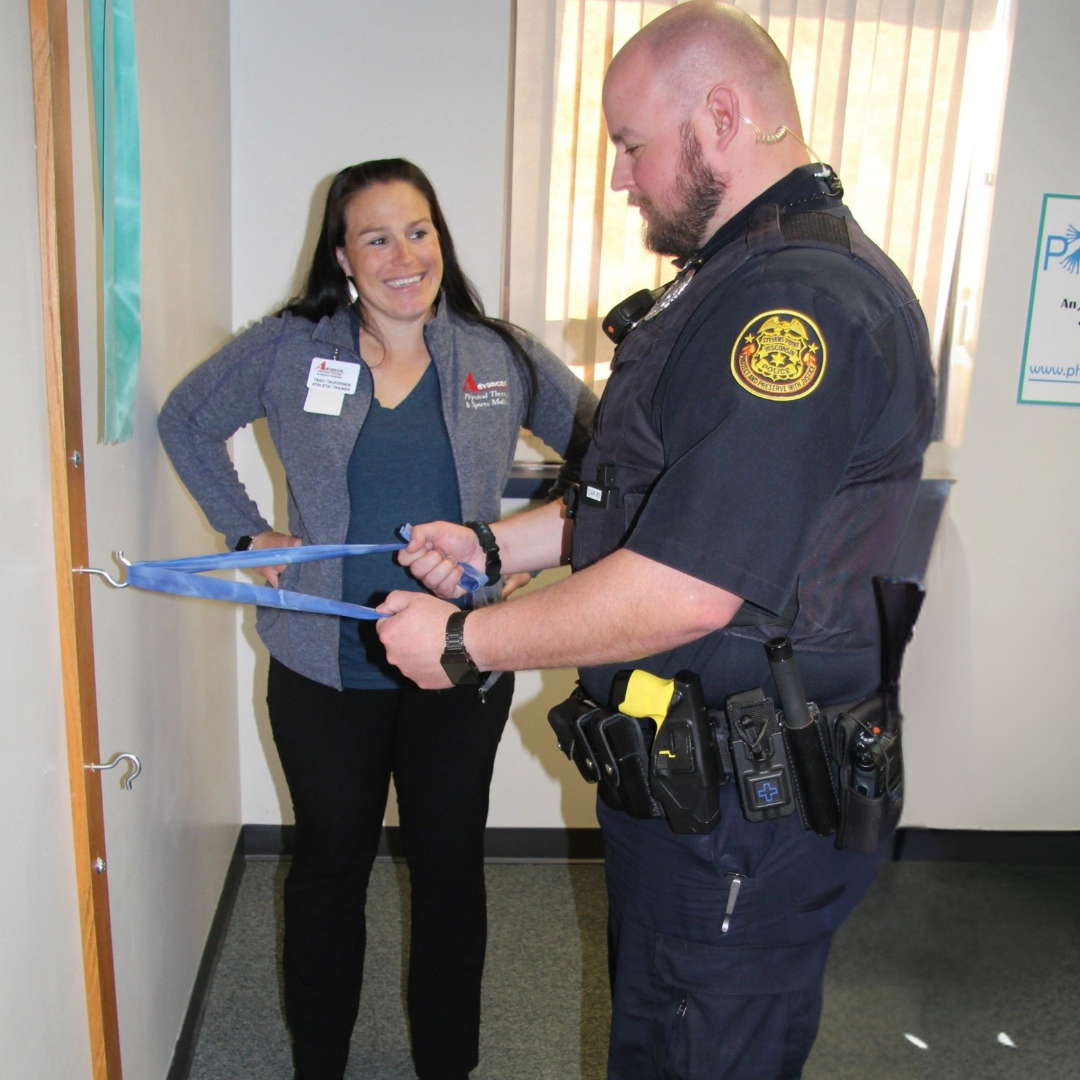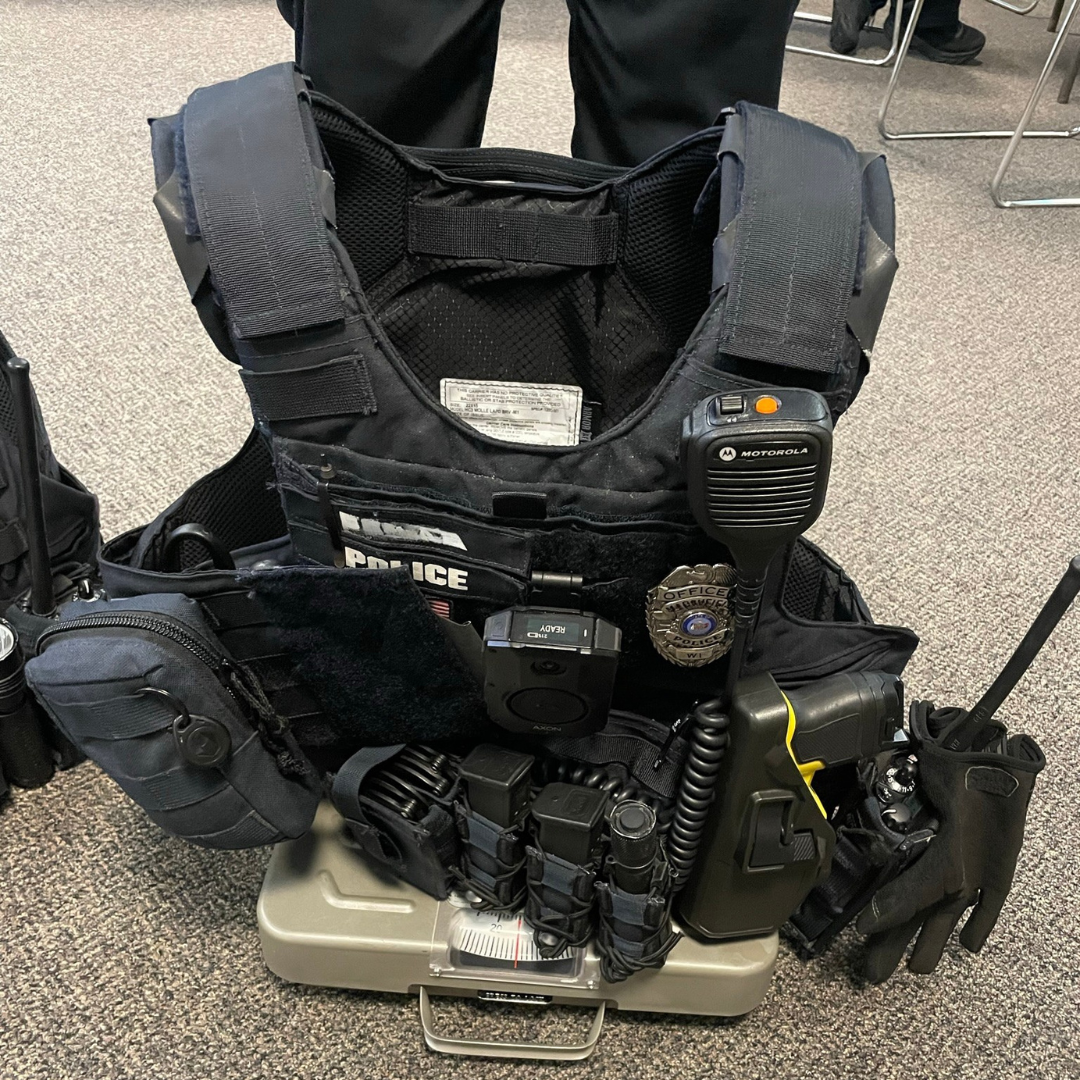Tactical Load Carriage: The Unrecognized Weight of Readiness
By Traci Tauferner, LAT, ATC, CSCS, PES Director of Industrial & Tactical Medicine, Advanced Physical Therapy & Sports Medicine
An officer came into my athletic training room with chronic shoulder pain. It had become his new normal: nagging soreness that flared after shifts, disrupted his sleep, and made defensive tactics training miserable. He’d seen a physician, taken over-the-counter meds, and was about to be scheduled for imaging. But when I evaluated him in uniform, the answer was immediate and mechanical: he wasn’t using the cummerbund on his external vest. With the cummerbund disconnected, the full load of his gear, more than 15 pounds, was resting on the trapezius and cervical spine. I engaged the side straps, distributed the load properly across the torso, and gave him posture resets. Within 72 hours, the pain was gone. No imaging. No prescriptions. No lost time. This story is common. And fixable.
Firefighters, police officers, and tactical operators are tactical athletes. However, the weight they wear isn’t scaled, adjusted, or evaluated in the same way as it would be in any other performance environment. Officers may wear 12-22 pounds of gear daily; SWAT or bomb technicians may exceed 70 pounds of gear, depending on the mission profile; firefighters routinely put on 60 pounds of gear when fighting a fire. When that weight is misaligned, the human body pays the price. Mobility decreases. Gait patterns change. Obstacle clearance slows. Core temperature rises more quickly. A review of tactical load carriage research confirms that operational load significantly affects aerobic and anaerobic task performance, increases fatigue, and impairs movement efficiency. (1)
Officers and firefighters are often told that discomfort is part of the job. But when “normal” includes:
Sciatic pain from belt compression
Shoulder impingement from vest overhang
Numbness in the thighs from hip-loading tools
Migraines from cervical strain
. . . it’s time to reassess what we’re calling tactical readiness.
Low back pain (LBP) is one of the most common injuries in the fire service and law enforcement. LBP is strongly linked to trunk fat mass, duty belt pressure, and prolonged static postures. (2) And the impact isn’t just pain: it’s missed work, compensation claims, avoidable imaging, and early retirements.
You train for your job. Your gear should be trained for you. Don't remove gear. Instead, realign it. Here’s how:
Fit your vest like a tool, not a uniform: Use the cummerbund. Adjust shoulder straps. Balance your load between the front and back panels. Weight shouldn’t pull your shoulders down or pinch your sides.
Recheck after every uniform change: Adding a new pouch, med kit, or radio? That changes your load balance. Do a 30-second movement screen in uniform squat, twist, overhead reach, and deep breath. Any pinch? Time to re-fit.
Make this a team standard: Peer-assess during roll call. Use mirrors in the locker room. Make gear checks part of wellness checks.
Get evaluated professionally: Athletic Trainers, Strength Coaches, or Uniform Vendors can do ergonomic checks specific to your gear. You don’t need to guess.
Tactical load carriage doesn’t have to hurt. You deserve equipment and support that keeps you operational without wearing you down. For a personalized fit assessment or gear strategy, reach out to our Tactical Medicine team. We’re here to serve the people who serve.
---
References:
1. Joseph A, Wiley A, Orr R, Schram B, Dawes JJ. The impact of load carriage on measures of power and agility in tactical occupations: a critical review. Int J Environ Res Public Health 2018 Jan 7;15(1):88.
2. Lanham S, Abel M. TSAC Report First Responder Column, April 2024. Addressing low back pain in first responders. NSCA TSAC Report.



